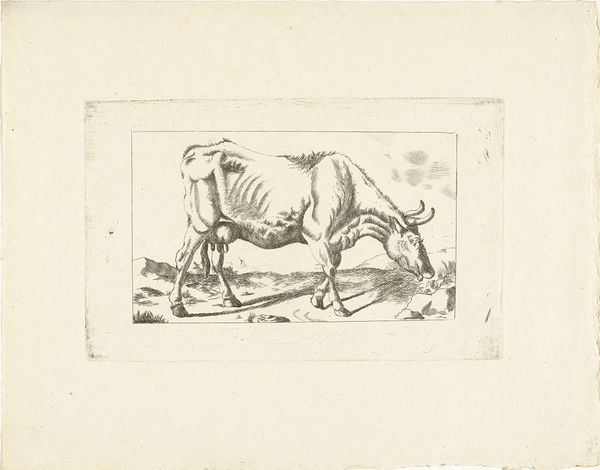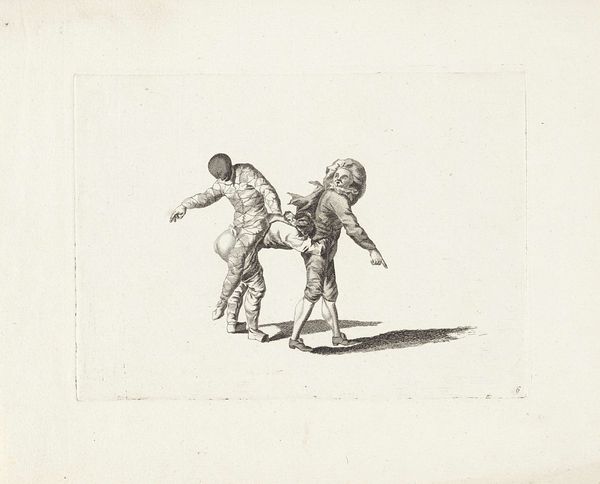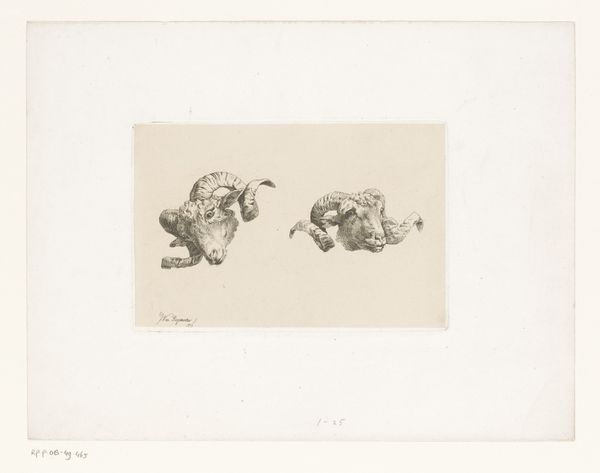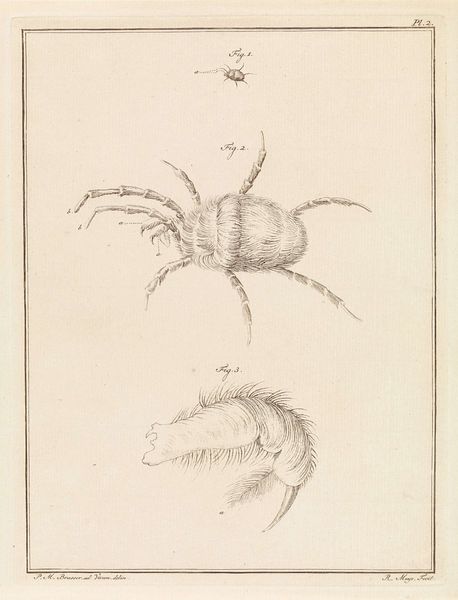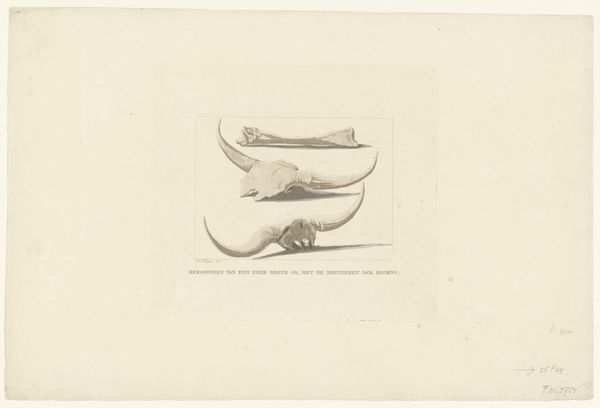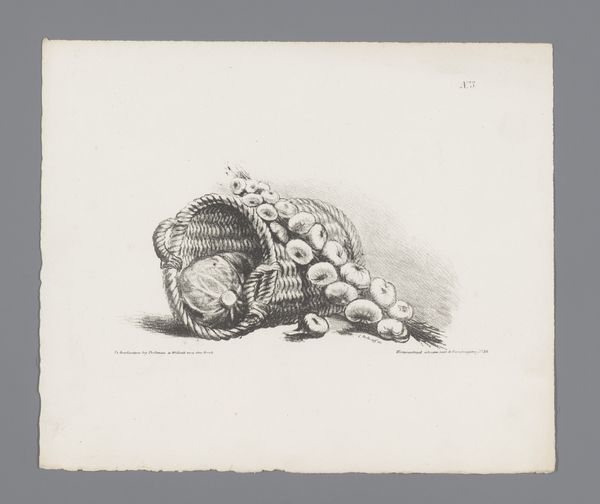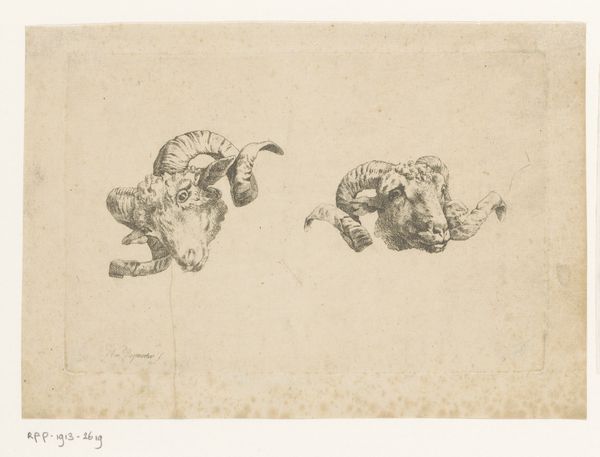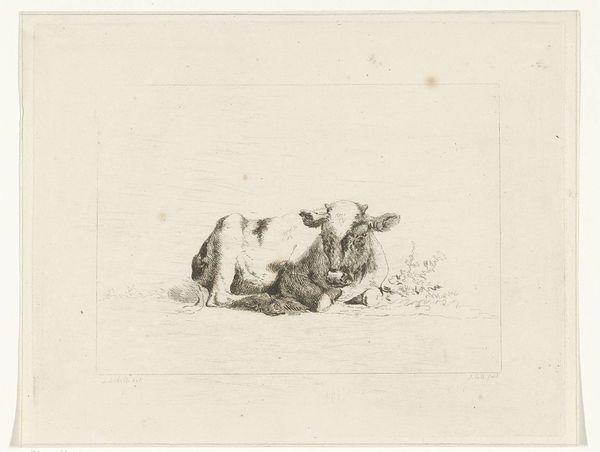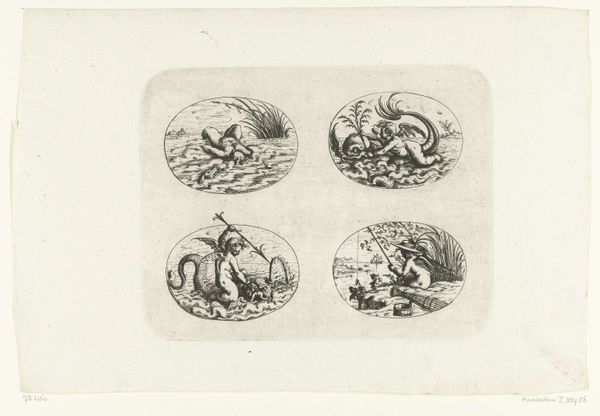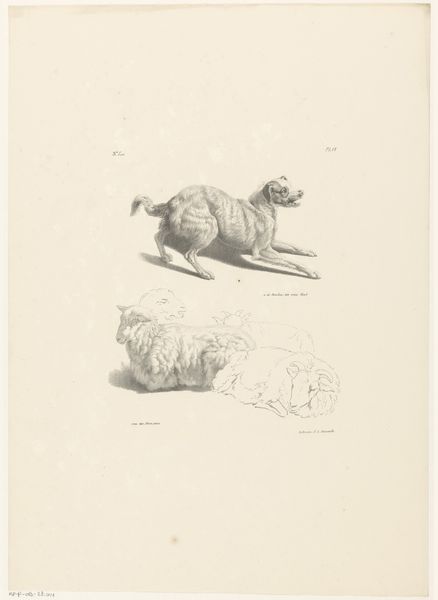
print, etching
#
baroque
# print
#
etching
#
pencil sketch
#
figuration
#
genre-painting
Dimensions: height 147 mm, width 234 mm
Copyright: Rijks Museum: Open Domain
This small, anonymous print features a harlequin and a clown, each balancing upside down. The image speaks to the popularity of Commedia dell'Arte characters throughout Europe as early as the 16th century. We might consider the politics of laughter in the culture that produced this print. Often performed outdoors, the Commedia was accessible to ordinary people, and its stock characters with their familiar masks and costumes were well-known and much loved. The harlequin, with his checkered suit, and the clown, with his simple costume and darkened face, were immediately recognizable types. Their acrobatics and physical comedy were intended to elicit laughter and amusement. But what exactly makes us laugh? Is it the performers’ skill and agility? Or does it have more to do with the ways that comedy can invert the social order, poking fun at authority and propriety? The historian must consider not just what is depicted, but what that imagery might have meant in its specific social and institutional context.
Comments
No comments
Be the first to comment and join the conversation on the ultimate creative platform.
